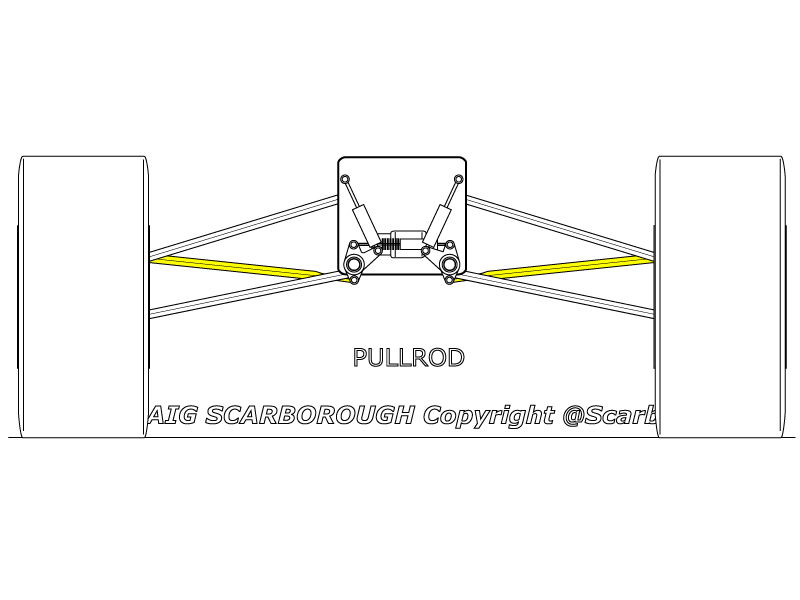Suspension arms do carry vertical load. Let's put it to an extreme condition, suspension vertical, it carries all the vertical load. So in between parallel to the floor, and perpendicular, there must be a transition point.
Despite appearances the pullrod is as effective in moving the rocker for a given wheel travel as a pushrod. The important factor is the angle between the rod and the wishbone is connected to, rather than the rods angle to the chassis.
http://scarbsf1.wordpress.com/2012/02/2 ... ari-f2012/
Also from craig
Intuitively, this looks like the rod would barely move the rocker as the wheel rises. But the pull-rod actually operates by creating a triangle with the wishbone, so in actual fact it's the angle between the wishbone and pull-rod that creates the displacement. When comparing Ferrari's pull-rod geometry to a push-rod, the relative angles are the same and therefore both operate the rocker equally efficiently.



